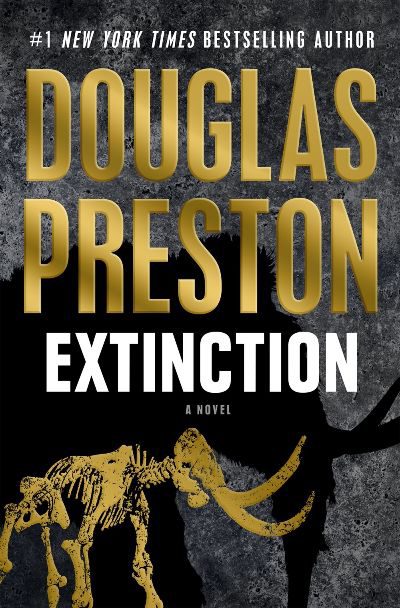French made her name in crime fiction by exploring the underbelly of Irish life in her Dublin Murder Squad series, which blew the lid off any leprechauns in the mist-type views of Ireland. Here the little people are dragged back out, but for good reason: the locals in the west of Ireland mountain village of Ardnakelty lay the superstitions and rural naivete on thick when an Englishman comes to town and promises to make them rich. Meanwhile, their real game is, as the book says in a different context, “offensive and defensive weapons as well as broad-spectrum precautionary measures” (I’m from an Irish mountain area myself and French has us pinned to a board like a butterfly). Playing up the stereotypes is working great, with the Englishman, Mr. Rushborough, lapping up stories of his sainted ancestors while the locals plan to scam him. Come to find out, it’s not a one-sided game. There are three great characters here: Johnny Reddy, a local huckster who left his family for London and is now back expecting a hero’s welcome, with Rushborough in tow; Trey, his daughter, who has started to make an honest name for herself as a talented carpenter, and who is seething with rage against her father and the world; and Cal Hooper, a former Chicago cop who’s lived in Ardnakelty for a few years and is having none of Johnny’s bluster. French fans will love reacquainting themselves with these characters, whom they met in The Searcher (2020); newcomers to the author or this series will be glad they tried this emotional saga.
Police Procedural
Rural New Zealand police records clerk Lorraine (Lo) Henry isn’t supposed to get involved in cases. But when children in her town start to disappear, and it’s clear that she knows more than the officers about local families and goings on, and cares more than her colleagues do, the big-city cops who’ve been deployed ask her to step in. It’s not a popular move, but Lo is determined, especially after her nephew becomes one of the missing. Complicating the investigation is town politics that pits poorer Maori residents against white or “Pakeha” ones. Family histories, the drug trade, and gang activity also muddy the case and keep Lo busy (“everything feels pushed together like too much washing in the machine”) as she doggedly tries to find the children. Things move fast but reach calamitous speed in the last quarter of the book, a gripping showdown leading to a last line that won’t leave a dry eye. Baragwanath’s language throughout just won’t stop with a verisimilitude that deeply immerses readers in small-town life and this particular town’s warmth, sadness, and terror. Paper Cage won the Michael Gifkins Prize for best unpublished novel by a New Zealand author and has been shortlisted for both the Ned Kelly Award for Best International Crime Fiction and the New Zealand Ngaio Marsh Award for Best First Novel. It’s no wonder.
Connelly’s stellar effort, which brings together defense attorney Mickey Haller, the Lincoln Lawyer; and retired LAPD Detective Harry Bosch, explores a case of an incarcerated woman claiming innocence. She was coerced into a no-contest plea of a lesser sentence of manslaughter by her sleazy attorney, who told her if she didn’t agree to this deal, she would face life in prison for killing her sheriff’s-deputy husband. Every attempt by Haller and Bosch to find answers is met with either disdain or tainted evidence and testimonies. Connelly is a master of taking a straightforward case and compellingly revealing the details while throwing in a few twists and turns. Laws are questioned and Bosch and Haller soon determine they are David and this Goliath is too strong for them. Whether you are a fan of the books or the Netflix and Amazon Prime series, this latest entry is another gripping winner from the master of crime fiction, and with the great popularity of the TV series, expect huge interest in this title.
Washington, DC homicide detective Alex Blum is an in-between sort of cop. He’s not jaded, but he’s used to the horror he sees on the job. He knows that, unsexy as it is, procedure gets things done, although he can cut corners when it suits. But after he’s called to a murder scene and finds that the dead man, Chris Doyle, knew one of Blum’s informants, Artie Holland, Blum throws procedure and even personal beliefs to the wind. The informant is missing—in his world as a drug dealer, probably dead, but we’ll see—but his girlfriend, Celeste, is still in his home. She and Blum take up a dangerous relationship, one that must be hidden from both his job and Artie’s cohort, who wouldn’t like a cop taking Artie’s place. Swinson’s dialog is a highlight here. The characters, from the medical examiner and cops to desperate Celeste and the dancers at a topless bar—one of Artie’s haunts—all talk us through seedy and horrible events while the rumored Y2K disaster looms and Blum edges further toward his own destruction. Swinson’s unusual ending tops the surprises in this rough, realistic noir.
Real life collides with reality television in a mega-rich section of Los Angeles in Goldberg’s latest thriller. Detective Eva Ronin investigates the discovery of bones found in a park outside a private and secure area called Hidden Hills. That cold case soon requires focusing on a current investigation when a reality star is murdered inside her home while her family sleeps nearby. Hooded thieves broke in and ran when the family awoke to the gunshots. The expected security of the community appears nonexistent. Eva knows about the world of Hollywood since her police role has become a TV series, so she’s used to what is factual being played up for entertainment value. But this case seems to defy logic as more deaths occur, and reality means nobody is safe. Goldberg has created a terrific character in Eva Ronin, and he knows how to write a fast-paced thriller mixed with humor and inside jokes with no fluff. Like Michael Connelly, Goldberg also utilizes the Los Angeles landscape effectively.
Erebus is a resort for the extremely wealthy, and those who visit the sprawling grounds in the heart of the Colorado Rockies get to experience Earth’s distant past. Using cutting-edge technology, scientists have been able to de-extinct mammals like woolly mammoths and plant life from the Pleistocene era. A young couple pays for a camping trip in the sprawling complex and is kidnapped and killed by what appears to be a group of ruthless hunters. Colorado Bureau of Investigation Agent Frances Cash and county sheriff James Colcord lead the investigation. As the mystery creates national headlines, Cash and Colcord meet resistance from both the team at the resort and their own supervisors. What happened to the couple is only the beginning, and the shocking truth will threaten lives and the history books. Preston creates a Michael Crichton level of thought-provoking science and thrilling intrigue while avoiding writing a Jurassic Park clone. Extinction goes beyond the simple question of whether man should play God, and with a terrific cast of characters, Preston has a guaranteed bestseller.
It’s winter when a fire destroys a farmhouse in rural Sweden, burning it to the ground. With the parents out for the night, the only victim was the twenty-something daughter of the house. But she wasn’t killed by the fire; her autopsy reveals that she was murdered by blows to the head. Who would have wanted to kill Lovisa, who was loved by everyone? While the murderer is quickly identified, tried, and jailed, this story continues to expand in multiple directions, exploring the impact of a murder on a community, the families, even Edvard, the perpetrator. It’s also a coming-of-age novel as we follow Edvard’s nephew, who grows up in the shadow of his uncle’s acts, worrying that he too has a propensity for violence. But at its heart, this is the tale of Vidar Jörgensson, a young police officer who was one of the first officers at the fire and helped to solve it, but then spent years ruminating over the case. This is no less than a brilliant crime novel. Carlsson combines his deep knowledge of criminal motivations and trauma—he has a doctorate in criminology—with rich, compelling storytelling. Fans of the TV series Broadchurch and the works of Ann Cleeves will enjoy the deep community focus. Sure to be one of the big books of early 2024.
Jhonni Laurent is the first female sheriff in her rural Indiana town of Field’s Crossing and its surrounding quad-county area. She tries to be more community oriented than her predecessor, showing up at the first day of school to greet parents and students, for example, and avoiding all efforts at improper influence. Her work is a hit with locals but isn’t appreciated by a colleague whom she beat in the race for the job. Or his nasty buddy at the local newspaper, who’s doing all he can to get Jhonni out of the political picture. She doesn’t need the first local murder in…ever?…to happen on her watch, but when teenager Stephanie Gattison is found frozen in a snowbank, it looks like foul play. The body is barely thawed before another victim is found, this time an ice fisher who’s found frozen to the lake surface. Fans of Emily Littlejohn’s Detective Gemma Monroe and Tony and Anne Hillerman’s police officer Bernadette Manualito will enjoy making the acquaintance of this steadfast, likable, and capable sheriff, while those who love a small-town atmosphere, with its closeness as well as its backbiting, will feel right at home here. A debut author to watch.
Every flight headed to Italy should have on board a few dozen copies of Trinchieri’s mysteries—they are the perfect warm up to an Italian vacation, full of wry humor, eccentric characters, a gentle murder or two, plenty of excellent wine, and best of all a whole lot of Tuscan cooking. Ex-NYPD detective Nico Doyle moved to the small town of Gravigna after the death of his wife, a native, and he’s been embraced by the residents, even helping out in the kitchen of his in-laws’ ristorante (and getting great reviews). But he can’t leave his law enforcement years completely behind him, and he’s regularly summoned by Perillo, one of the local carabinieri, to help out on a case. Here, in the fourth installment, the murder victim is an older woman—owner of the handsome Villa Salviati—whose murder produces a bevy of possible suspects, including lovers, friends, and a couple of mean-spirited daughters. Will Nico and Perillo ever be able to return Gravigna back to more tranquil days? A delight from start to finish.
Gardiner shakes up the serial-killer genre with her latest thriller. FBI profiler Caitlin Hendrix visits serial killer Efrem Judah Goode in prison. He shows her detailed drawings of the women he has killed, but none of them are the victims he’s incarcerated for killing. He claims innocence for those women’s murders but is not innocent of being a murderer. There is a copycat called the Broken Heart Killer, and somehow Goode and this UNSUB are connected. Caitlin dives into the case and will once again put her career and life on the line for justice, while bringing closure to the families of the women Goode killed. What she uncovers will surprise even the most jaded reader. Gardiner has a gift for tackling gruesome and uncomfortable topics and giving the prose a literary spin. While other authors might wallow in the ugly, Gardiner makes it beautiful. Fans of true crime and the television show Criminal Minds should make Gardiner mandatory reading.










